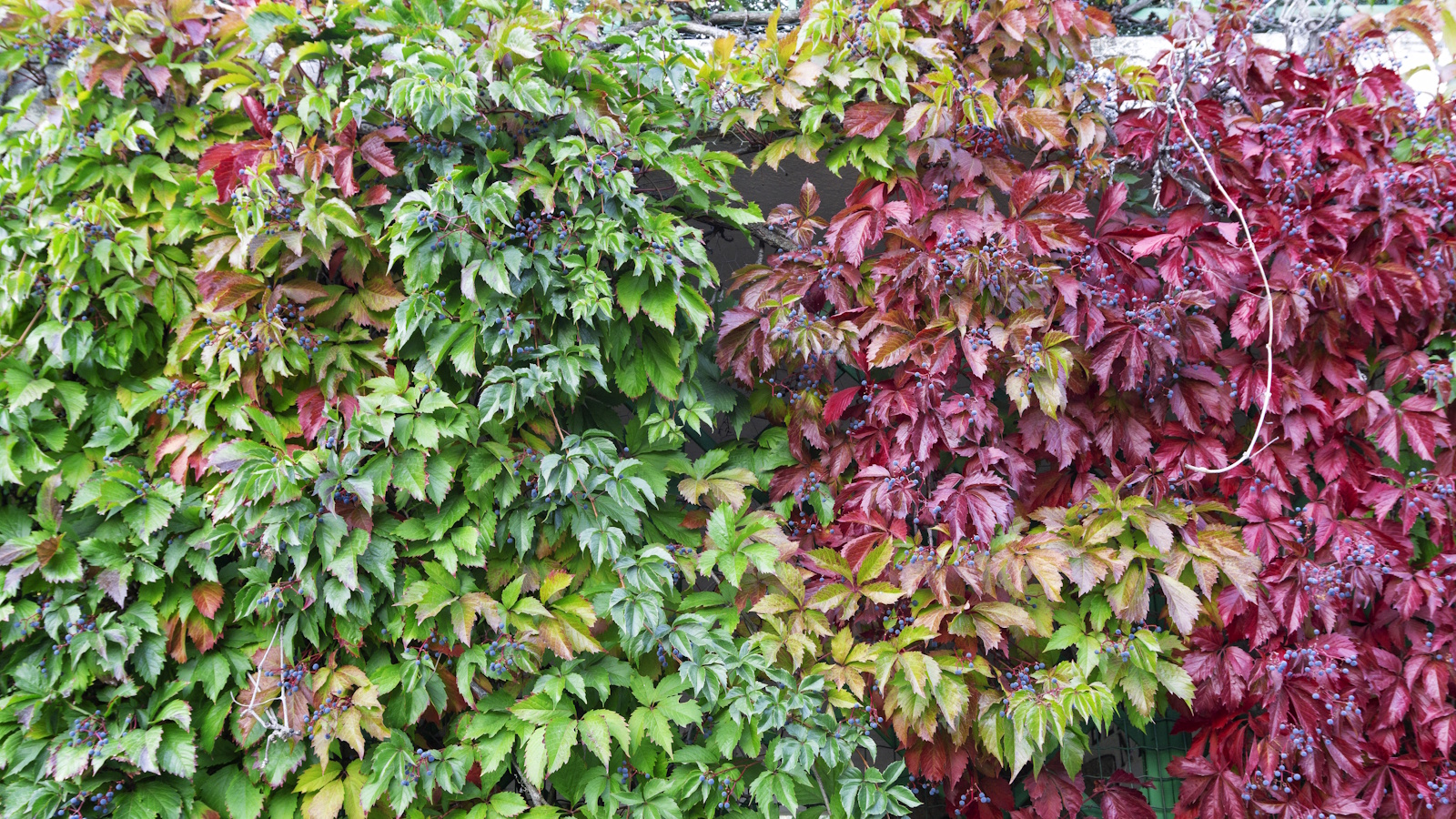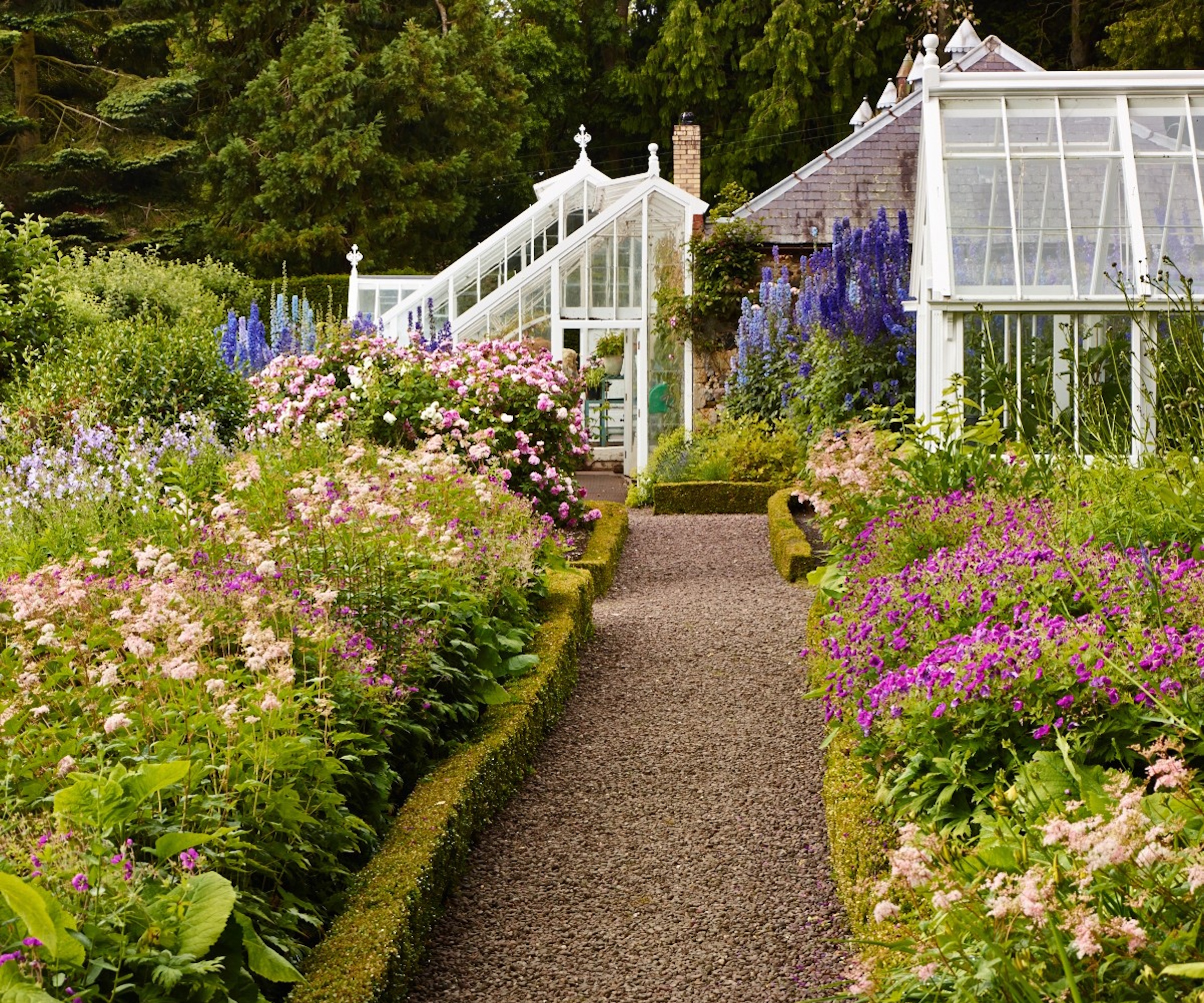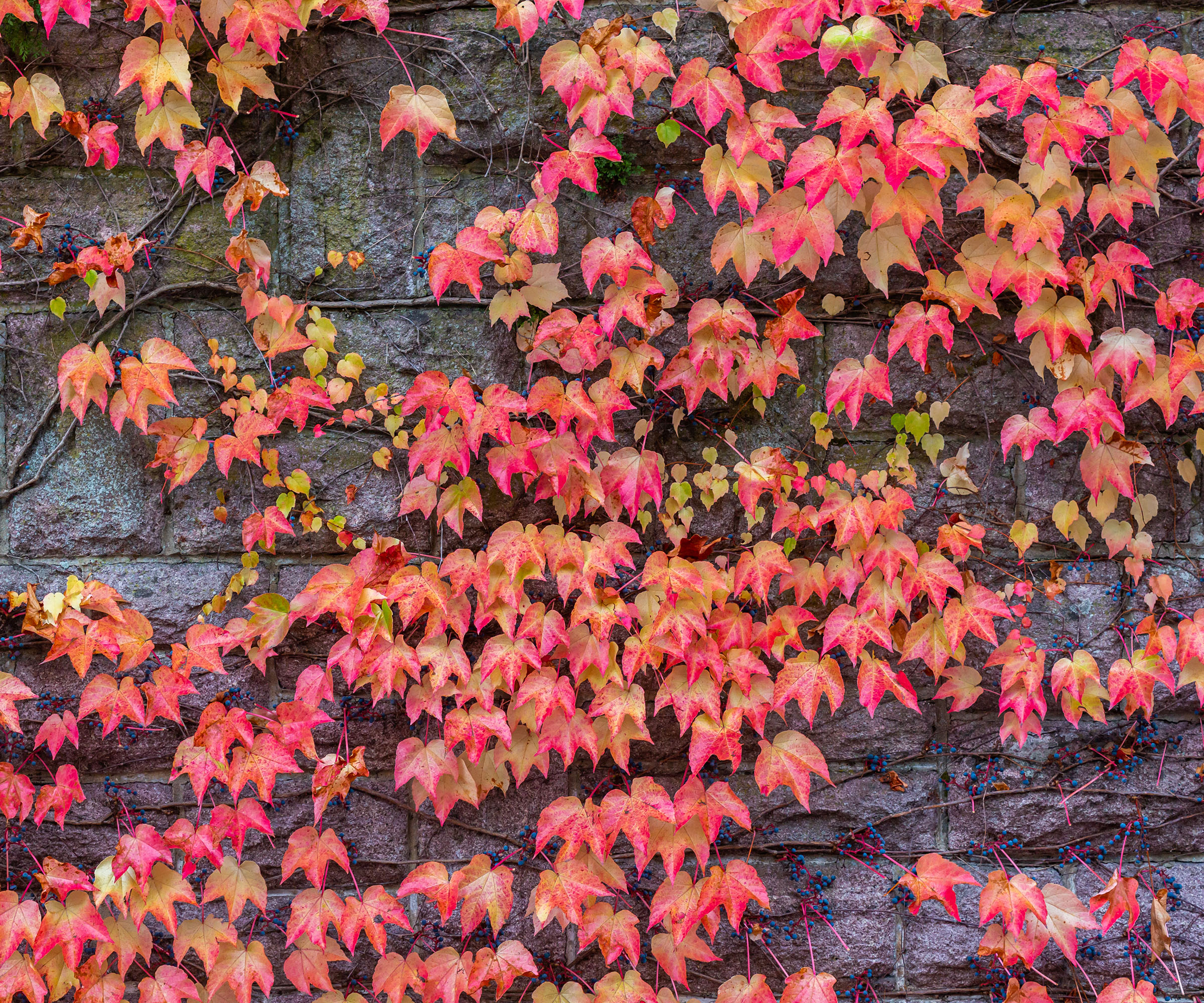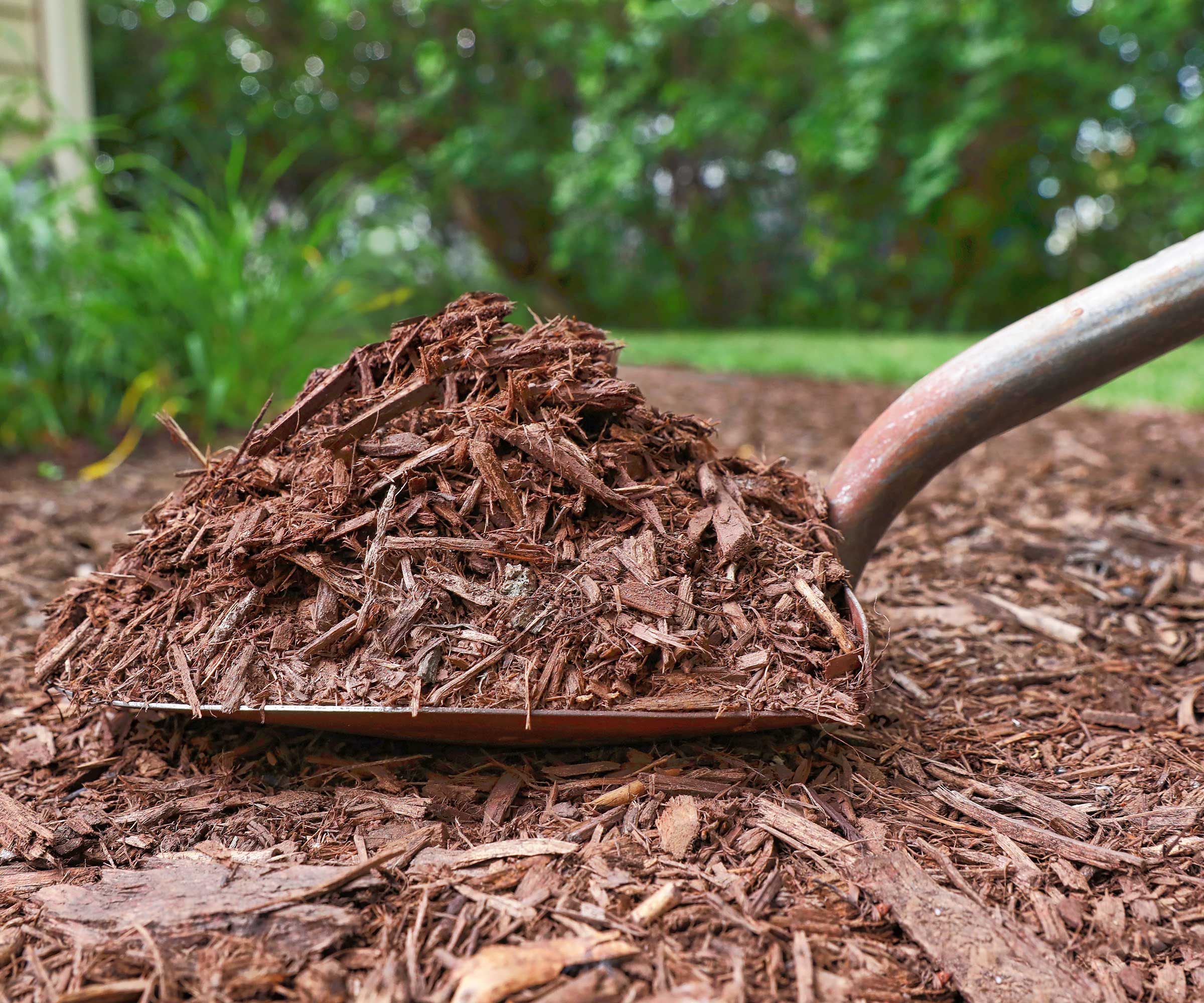
Virginia creeper is a fast-growing vine that is native to North America. With a tolerance for shade and neglect, this climber is ideal for gardeners who are short on time and want a low-maintenance vine to fill bare walls and uninspiring empty fences.
Also known as the five-leaved ivy due to its star-like ovate leaflets, Virginia creeper, or Parthenocissus quinquefolia, is not only an easy, foolproof species, but it is also a vine to grow for fall color, turning shades of bright red and orange in the fall months, as can be seen in the images here.
So, if you are looking for one of the easiest climbers to grow this year, you cannot do much better than this vine. Here, one garden expert from New Jersey reveals how to grow Virginia creeper, including advice on soil and light, as well as keeping this vigorous plant in check.

How to grow Virginia creeper
This resilient climbing plant is quick to establish and fills garden walls, fences, pergolas, and arbors with lush greenery. Not only will this species look good, but it will also prove popular with insects, birds and pollinators, who will shelter and feed in the dense canopy.
Growing habits for Virginia creeper

'It might sound odd, but if you want to learn how to grow Virginia creeper, the first consideration should be: are you sure you want to grow it,' says Bert Bast, garden expert and owner of Bast Brothers Garden Center.
'While not considered an invasive climber, once you have it, Virginia creeper will be quite difficult to get rid of.
'If you are sure you want to grow it, the good news is that Virginia creeper is one of the easiest perennials, largely due to how hardy and vigorous it is,' Bert adds. 'It can grow in nearly any soil condition and can be planted from US hardiness zones 3 to 10.'
Although this species is deciduous, typically shedding its leaves in November and December, it will create unique and intricate stem structures that look particularly good in winter.
Be warned, however, that the tendrils and suckers can damage weak stonework and remove paint from fences, which should be a consideration before planting.
'In addition, do not be afraid to hard prune it,' Bert says. 'There is very little you can do to harm this plant, and cutting back will keep it in check.'
Live Virginia creeper vines are available from Amazon.
Care guide for Virginia creeper

- Soil: As some of the easiest climbing plants, Virginia creeper can be grown in most soils, including sand, loam, and clay soil. For the best results, consider annually mulching your borders to improve soil structure and health, using something like this organic soil, available from Walmart. While you can mulch at any time of year, I tend to do this when borders are cut back in fall or winter.
- Light: 'Virginia creepers are perhaps the best climbing plants for shade,' Bert says. 'They are adaptable to shade or sun, although a combination of both will produce the best growth.' So, as Bert says, aim for part-sun-part-shade, if possible, and while they will grow in full shade, growth rates will be much reduced.
- Watering: Following planting, during its first growing season, you will need to water Virginia creeper plants regularly by deep watering. After one or two years, this drought-tolerant climbing vine will 'require very little water and shouldn’t need any additional to what the weather will provide,' Bert adds. Any supplemental watering will only be necessary during prolonged dry spells in July or August.
- Fertilizing: Virginia creepers should not need fertilizing and can usually access what they need from the soil. However, if you are worried about poor soil or lack of nutrients, sprinkle some slow-release organic fertilizer, available from Amazon, atop the soil during spring.
- Pruning: As already mentioned, pruning Virginia creeper vines is important, as these vigorous climbers can produce 10 feet of growth in a single season. Prune in winter or early spring, cutting back to the desired shape and size. If you have a vine that has spread, you can cut back right to the base and start again. Just be careful when removing vines from walls and fences, as the tendrils can remove paintwork and plaster.
- Toxicity: The sap of Virginia creeper vines can irritate the skin, and the berries are poisonous, as they contain a high concentration of oxalic acid, which is toxic to humans, cats and dogs.
FAQs
Is Virginia creeper invasive?
In the US, Virginia creepers are not considered invasive as they are native plants. However, they are aggressive, which should be a consideration before adding them to your yard. If you are unable to prune your plant regularly, this might be one species to avoid.
What are the best varieties of Virginia creeper?
There are several varieties of Virginia creeper that produce attractive foliage in a range of colors, so this will entirely depend on your taste and preferences. For example, 'Monham' has white variegations, whereas 'Red Wall' has some of the richest crimson fall foliage. 'Star Showers' is another good option for adding hues of white, green and pink to walls.
If you fancy trying some propagation this year, why not learn how to propagate Virginia creeper from cuttings? Trim several healthy shoots in early summer, stripping the leaves from the bottom third of the stem. Then dip the cut end in rooting hormone before placing it in a high-quality potting soil in a small pot. Within a few months, roots should be visible.
For more inspiration, see our guide on how to take plant cuttings and grow more of the vines and perennials you love.
Shop gardening accessories
These durable leather gardening gloves will keep your hands safe when handling toxic Virginia creeper plants.






